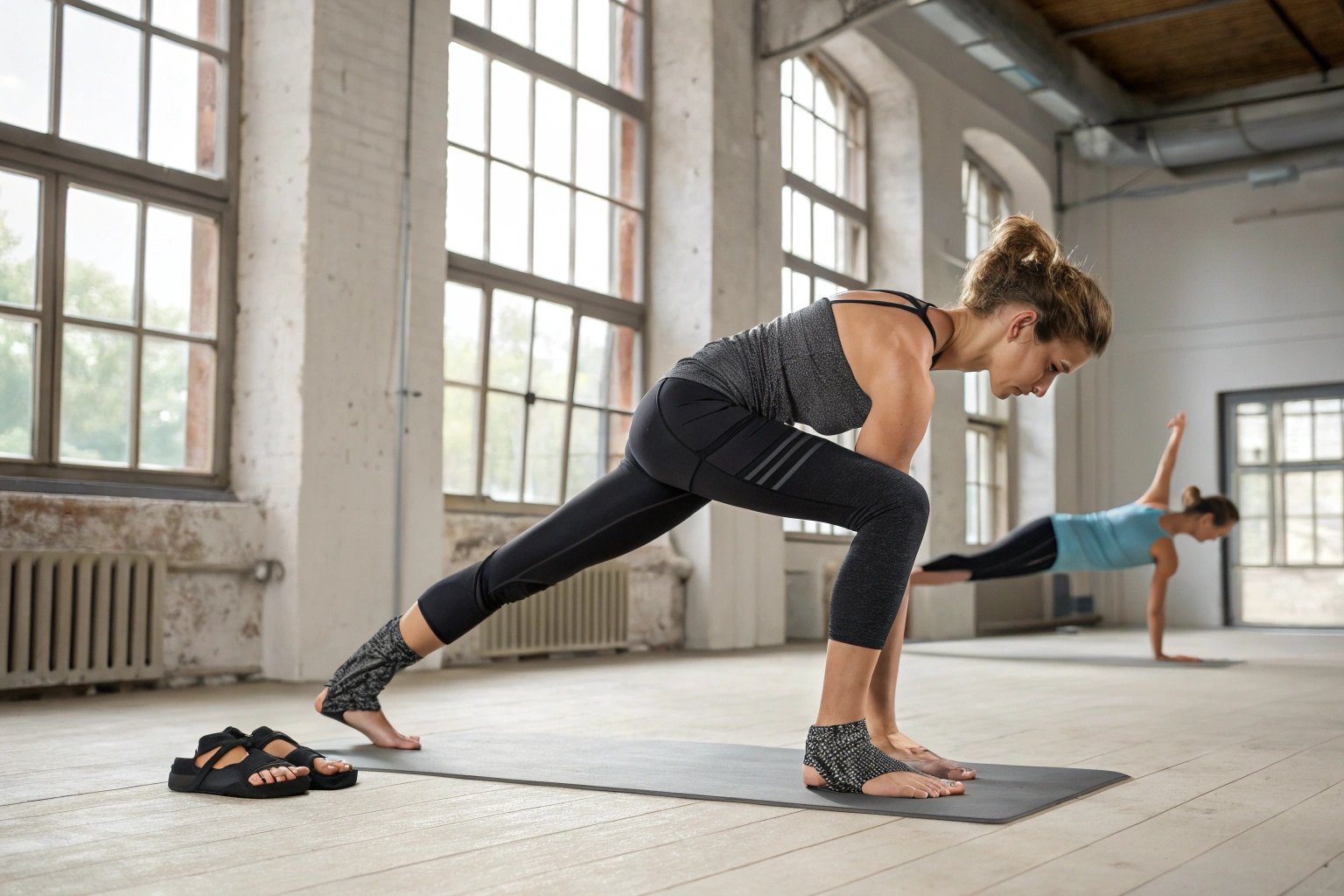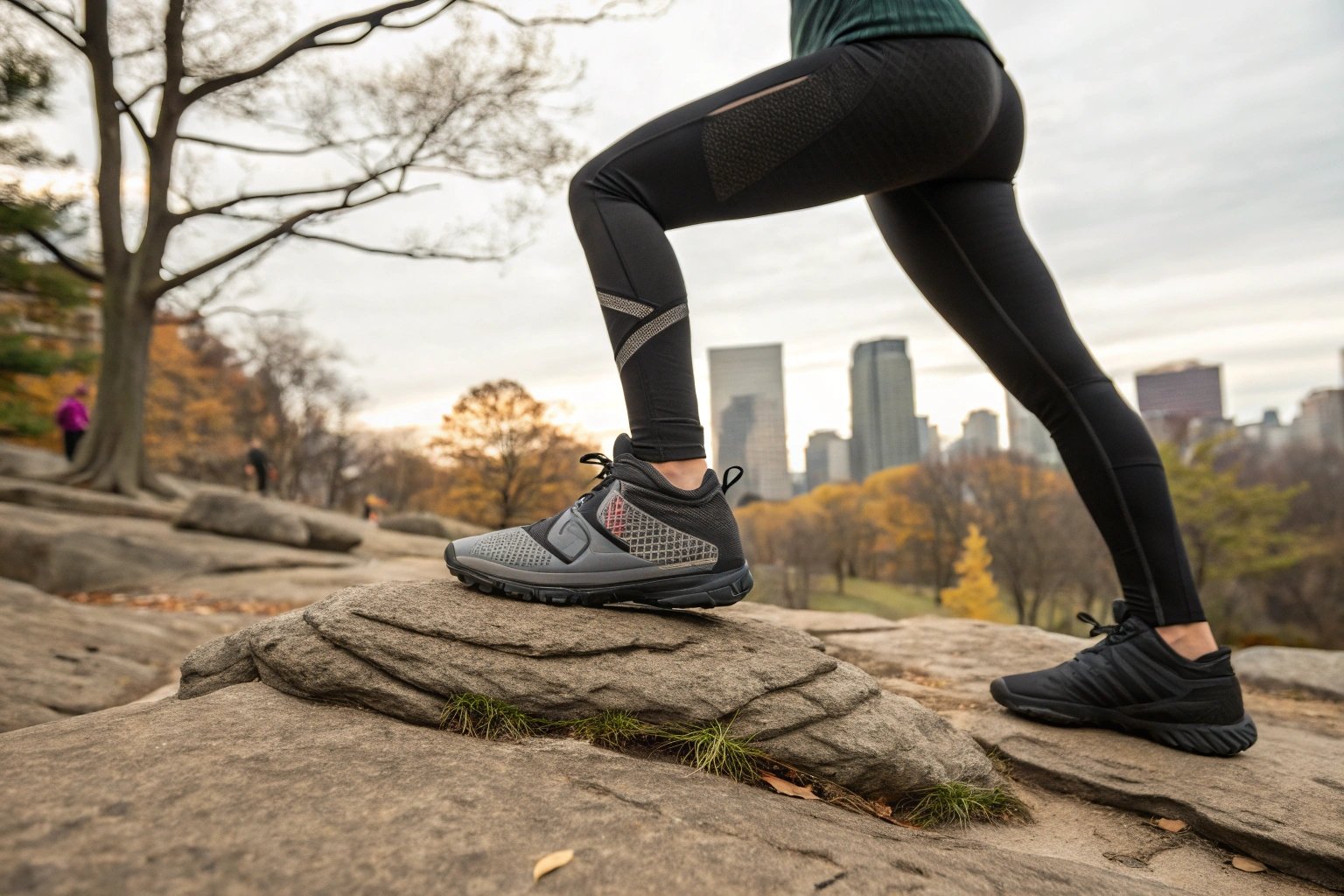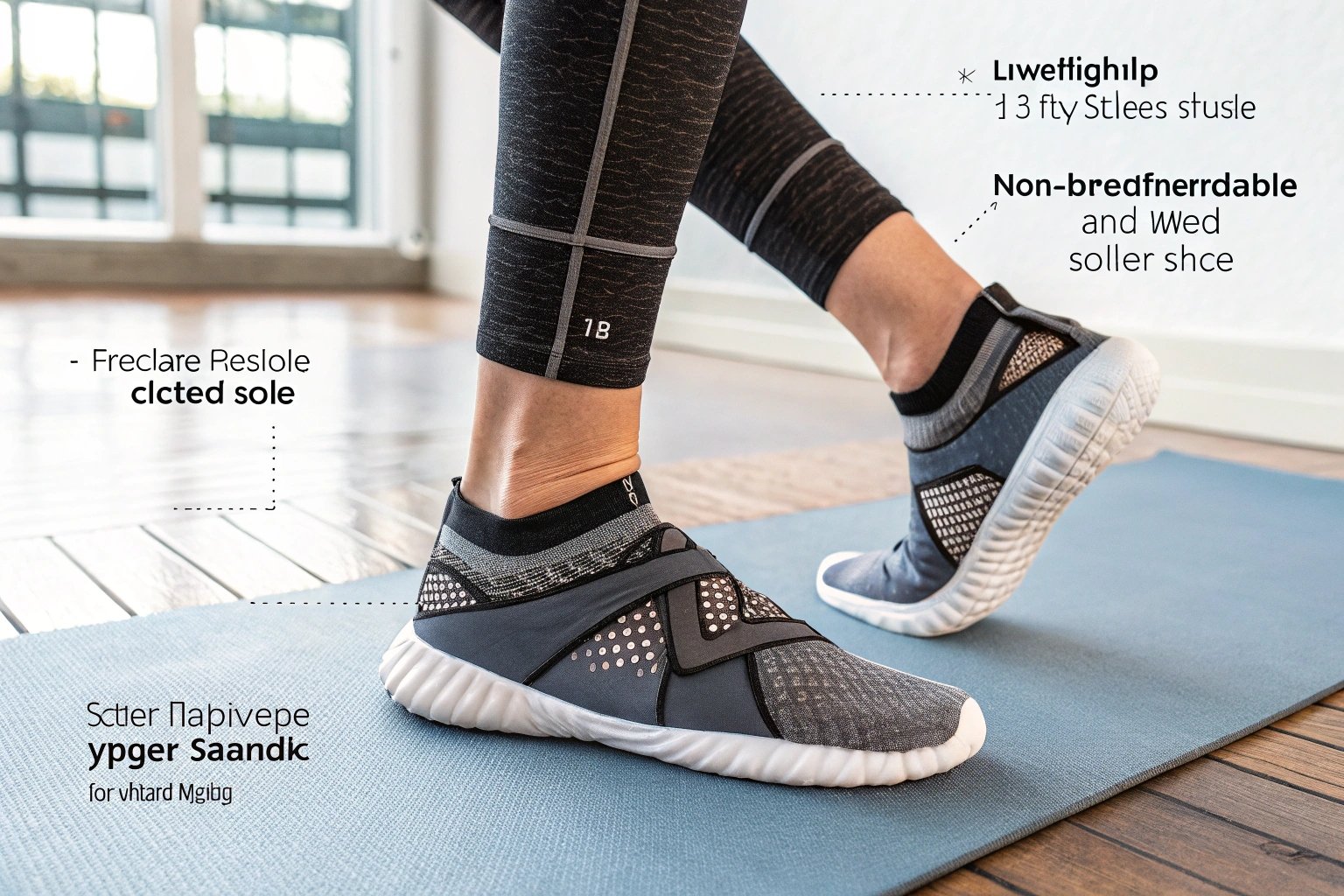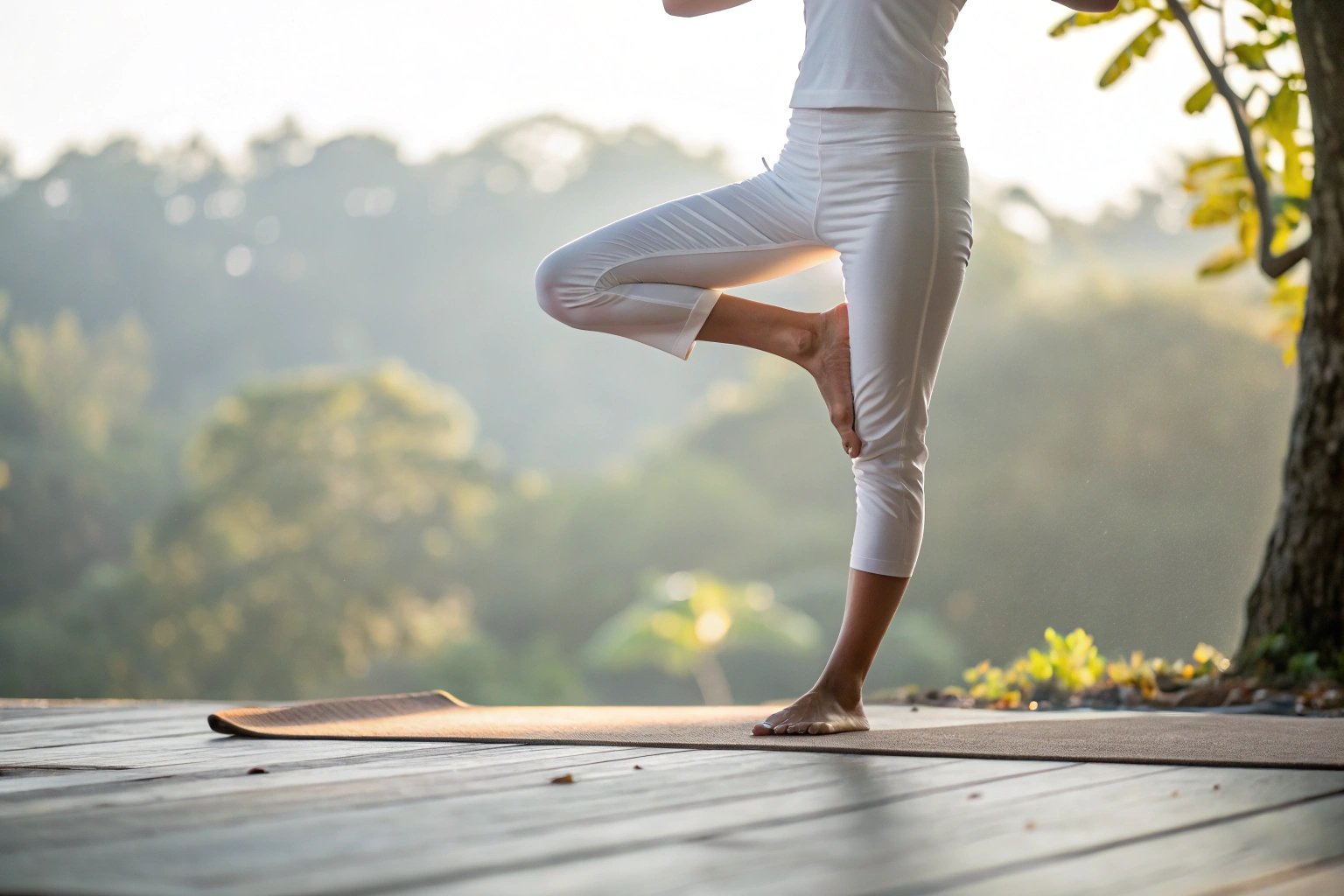When you’re starting yoga, you may wonder if you need special shoes. While most yoga sessions are done barefoot, some types of yoga might require a bit more support. Let’s explore what shoes, if any, you should wear to yoga.

For most types of yoga, the answer is simple: you don’t need shoes. However, there are exceptions, and knowing when and why to wear them can help you get the most out of your practice. Whether you are practicing yoga for flexibility, relaxation, or strength, understanding how shoes affect your comfort and performance is key.
Yoga is typically practiced barefoot, allowing you to connect with the ground and maintain proper balance and posture. However, there are certain situations where wearing shoes could be beneficial, especially in outdoor or specialized yoga classes. If you’re unsure whether you need shoes, this guide will clear things up and help you find the right footwear for your yoga practice.
When Should You Wear Shoes for Yoga?
Not all yoga styles are created equal. While many forms of yoga are performed barefoot, there are specific situations when you might need to wear shoes. These include outdoor yoga, yoga on uneven or rough surfaces, or when you need extra support for your feet.

If you’re practicing yoga outdoors, like in a park or on a beach, shoes can protect your feet from rough terrain, hot sand, or cold ground. Yoga on grass, dirt, or rocky surfaces could also cause discomfort or injury without proper footwear. Additionally, if you’re practicing yoga on a cold floor or in an outdoor setting where the temperature is low, shoes can help keep your feet warm and comfortable. For example, if you’re doing yoga in a forest or on a hiking trail, shoes with grip are essential to prevent slipping and to give you stability.
Yoga classes like hot yoga or Bikram yoga, which involve sweating, might also require shoes with enhanced grip. A non-slip sole will help you maintain balance and avoid slipping on the mat during poses. The key is to have shoes that are breathable, supportive, and that offer a good grip to avoid any injuries during intense movements.
What Type of Shoes Are Best for Yoga?
If you decide to wear shoes for yoga, look for those designed specifically for the practice. Yoga shoes should be lightweight, flexible, and breathable, allowing your feet to move freely while providing enough grip for safety.

Here are a few types of shoes to consider for yoga:
- Yoga socks: These socks have rubberized grips on the soles to prevent slipping during poses. They offer a barefoot feel while providing support and warmth.
- Barefoot sandals: These are open-toe shoes with straps that secure them in place, providing minimal coverage while giving you freedom of movement.
- Yoga shoes with a thin sole: These shoes are designed with a flexible and lightweight sole, mimicking the barefoot experience while adding protection and grip.
- Compression shoes: Some shoes offer light compression, providing extra support for your feet during yoga, especially in standing poses or poses that require balance.
Choosing shoes with good arch support is important for practitioners with flat feet or any foot conditions that require extra attention. The best yoga shoes are those that mimic the feeling of being barefoot while adding a layer of comfort and protection.
Can You Do Yoga Without Shoes?
In most yoga classes, you don’t need shoes at all. In fact, going barefoot during yoga has several benefits. It helps with balance, stability, and allows you to feel more connected to the ground.

Yoga encourages mindfulness and body awareness, and being barefoot helps you better engage with the mat and the floor. When your feet are in direct contact with the surface, it promotes better grounding, which is key in poses like tree pose or warrior. Going barefoot also allows your toes to spread out naturally, which can help with posture and alignment. The more you connect with the mat, the more stable and centered you’ll feel during your practice.
Benefits of Practicing Yoga Without Shoes
| Benefit | Description |
|---|---|
| Improved Balance | Being barefoot helps you maintain better balance in poses like tree pose. |
| Better Posture and Alignment | Allows toes to spread naturally, improving overall alignment and posture. |
| Increased Body Awareness | Engaging directly with the mat enhances mindfulness and awareness of your body. |
| Natural Circulation | Helps your feet maintain proper blood circulation and avoid discomfort. |
| Enhanced Stability | The more you connect with the mat, the more stable and centered you’ll feel. |
| Proper Adjustment by Instructors | Easier for instructors to provide corrections when your feet are uncovered. |
| Reduced Risk of Slipping | Yoga mats are designed for traction with bare feet, reducing the risk of slips. |
Furthermore, being barefoot helps your feet maintain proper circulation, preventing discomfort and ensuring that blood flows freely. Going without shoes also allows your body to properly adjust to the pressure and intensity of different yoga poses. It’s much easier for instructors to provide adjustments and corrections to your stance and posture when your feet are uncovered. Finally, yoga mats are designed with traction specifically for bare feet, and the risk of slipping is minimized when you’re not wearing shoes.
Are There Any Alternatives to Traditional Yoga Shoes?
If you prefer not to go barefoot or need extra protection, there are alternatives. Non-slip socks or barefoot sandals are great options for additional grip without the bulk of shoes.
Non-slip socks are a popular choice for yoga practitioners. They have rubberized grips on the soles to prevent slipping during poses, especially in styles like Vinyasa or Bikram yoga. These socks are breathable, lightweight, and comfortable, and they provide the feeling of being barefoot while offering extra support. These socks are ideal if you want to keep your feet clean while practicing yoga in a shared space. They’re also great for traveling or outdoor yoga, where you may not want to be barefoot in public.
Conclusion
In most cases, shoes aren’t necessary for yoga. However, if you prefer extra grip, or if you’re practicing outdoors or on cold surfaces, lightweight, flexible shoes designed for yoga are your best bet. Non-slip socks or barefoot sandals are also excellent alternatives, offering a balance of comfort and support. Ultimately, whether you go barefoot or choose shoes depends on the type of yoga you practice and your comfort level.

